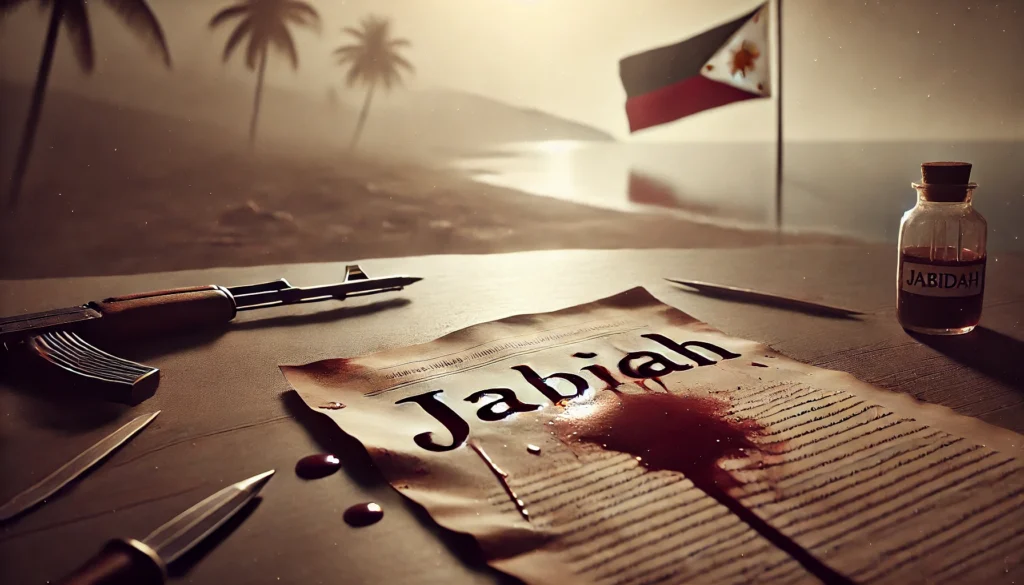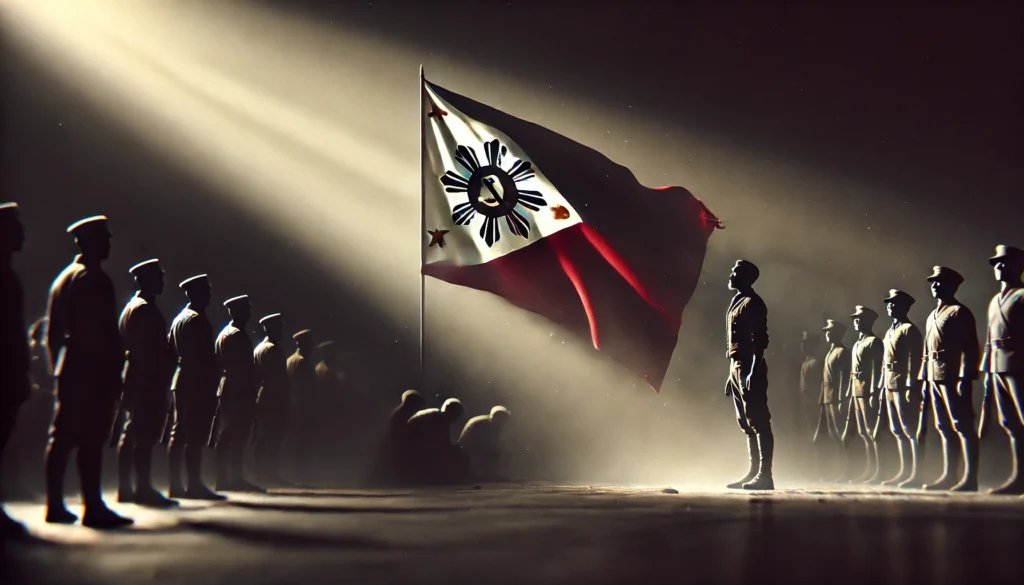The Jabidah Massacre, a dark chapter in Philippine history, occurred against the backdrop of longstanding tensions between the Muslim population in Mindanao and the predominantly Christian central government. To fully grasp the significance of this event, it is crucial to understand the historical context that led to it.
Pre-colonial Mindanao
Before the arrival of Spanish colonizers, Mindanao was home to various Muslim sultanates and indigenous communities. These societies had their own systems of governance, trade networks, and cultural practices that were distinct from those in the northern islands of the Philippines.
Impact of Colonization
The Spanish colonization of the Philippines in the 16th century marked the beginning of a tumultuous period for Mindanao. While the Spanish were largely successful in converting the northern islands to Christianity, their attempts to subjugate and convert the Muslim populations in Mindanao were met with fierce resistance. This resistance laid the foundation for centuries of conflict and mistrust between the Muslim south and the Christian-dominated central government.
American Colonial Period
The American colonial period (1898-1946) further complicated the situation in Mindanao. The Americans implemented policies that encouraged Christian migration to Mindanao, altering the demographic landscape of the region. This influx of settlers led to land disputes and cultural conflicts, exacerbating tensions between Muslims and Christians.
Post-Independence Challenges
After gaining independence in 1946, the Philippine government continued many of the policies that favored Christian settlers in Mindanao. This approach, combined with economic marginalization and political underrepresentation of Muslims, fueled resentment and separatist sentiments among the Muslim population.
The Jabidah Massacre: Unfolding of Events
The Jabidah Massacre, also known as the Corregidor Massacre, took place on March 18, 1968. This tragic event is considered by many historians as a pivotal moment that intensified the Moro separatist movement in the Philippines.
Operation Merdeka
The roots of the Jabidah Massacre can be traced back to a covert military operation codenamed “Operation Merdeka” (Freedom). This operation was allegedly conceived by the administration of President Ferdinand Marcos with the aim of infiltrating and reclaiming Sabah, a territory in North Borneo that was then (and still is) under Malaysian control.
Recruitment and Training
- Young Muslim men, primarily from Sulu and Tawi-Tawi, were recruited for this secret mission.
- They were promised military training and eventual integration into the Armed Forces of the Philippines.
- The recruits were taken to Corregidor Island, a former military base, for training.
Training Conditions
The conditions during the training period were reportedly harsh and inhumane. Recruits faced:
- Inadequate food and water
- Poor living conditions
- Intense physical and mental training
- Lack of proper medical care
Growing Discontent
As the training progressed, many recruits became disillusioned with the mission. Factors contributing to their dissatisfaction included:
- Realization of the true nature of the mission (to infiltrate Sabah)
- Ethical concerns about potentially fighting fellow Muslims in Sabah
- Unfulfilled promises of payment and benefits
- Harsh treatment by their trainers
The Massacre
The exact details of what transpired on March 18, 1968, remain contested, but the generally accepted narrative is as follows:
- A group of trainees, reportedly numbering between 14 to 68, were separated from the main group.
- These men were taken to an airstrip on Corregidor Island.
- They were then summarily executed by their military handlers.
Aftermath and Cover-up
In the immediate aftermath of the massacre:
- The military attempted to cover up the incident.
- Bodies were allegedly disposed of, making it difficult to determine the exact number of victims.
- The government initially denied that any massacre had taken place.
Unveiling the Truth: Investigations and Testimonies
The Jabidah Massacre might have remained hidden from public knowledge if not for the courage of whistleblowers and the persistence of investigators. The process of uncovering the truth was fraught with challenges and controversy.
Jibin Arula’s Testimony
- Jibin Arula, the lone survivor of the massacre, played a crucial role in exposing the incident.
- Arula managed to escape by jumping off a cliff and swimming to safety.
- His testimony provided the first public account of the massacre.
Senate Investigation
Following Arula’s revelations, the Philippine Senate launched an investigation into the incident:
- Senator Benigno “Ninoy” Aquino Jr. led the inquiry.
- The investigation faced numerous obstacles, including reluctance from military officials to testify.
- Despite these challenges, the Senate hearings brought national attention to the massacre.
Key Findings of the Investigation
The Senate investigation uncovered several important points:
- Confirmation of the existence of Operation Merdeka
- Evidence of the recruitment and training of Muslim youth for a covert mission
- Testimonies corroborating the poor treatment of recruits
- Indications of a cover-up attempt by military officials
Conflicting Narratives
As with many historical events, the Jabidah Massacre has been subject to conflicting narratives:
- Government Stance: Initially, the government denied the occurrence of any massacre.
- Military Perspective: Some military officials claimed that the incident was a result of a mutiny among the trainees.
- Survivor and Witness Accounts: These accounts largely supported the narrative of a planned execution.
Impact on Muslim-Christian Relations in the Philippines
The Jabidah Massacre had far-reaching consequences for Muslim-Christian relations in the Philippines, particularly in Mindanao. It served as a catalyst for increased Muslim separatist sentiment and contributed to the outbreak of armed conflict in the region.
Intensification of Separatist Movements
- The massacre galvanized support for Muslim separatist causes.
- It led to the formation of new militant groups, including the Moro National Liberation Front (MNLF).
- The incident was used as a rallying point to highlight the perceived injustices against Muslims in the Philippines.
Outbreak of Armed Conflict
In the years following the Jabidah Massacre:
- Armed clashes between separatist groups and government forces increased.
- The conflict resulted in thousands of deaths and the displacement of many civilians.
- The economic development of Mindanao was severely hampered by the ongoing violence.
Erosion of Trust
The massacre and its aftermath significantly eroded trust between the Muslim population and the central government:
- Many Muslims felt that the incident confirmed their fears of discrimination and oppression.
- The perceived lack of justice for the victims fueled resentment and suspicion.
- The event became a symbol of the historical grievances of the Muslim population in Mindanao.
Impact on National Politics
The Jabidah Massacre also had implications for national politics:
- It brought the “Mindanao problem” to the forefront of national discourse.
- The incident was used by opposition figures to criticize the Marcos administration.
- It highlighted the need for a more inclusive approach to governance, particularly concerning minority groups.
Legal and Political Aftermath
The legal and political repercussions of the Jabidah Massacre were significant and long-lasting. They shaped both domestic and international policies regarding Mindanao and the broader Muslim community in the Philippines.
Domestic Legal Proceedings
- Despite the Senate investigation, no one was ever formally charged or convicted for the massacre.
- The lack of legal accountability contributed to a sense of injustice among the Muslim population.
- The incident highlighted weaknesses in the Philippine justice system, particularly in cases involving military personnel.
Political Reforms and Initiatives
In response to the growing unrest in Mindanao, successive governments implemented various political reforms:
- Creation of the Autonomous Region in Muslim Mindanao (ARMM) in 1989
- Peace negotiations with various Muslim separatist groups
- Attempts at socio-economic development programs for Mindanao
International Attention
The Jabidah Massacre also drew international attention to the situation in Mindanao:
- It raised awareness about the plight of Muslims in the Philippines.
- International human rights organizations began to monitor the situation more closely.
- The incident influenced diplomatic relations, particularly with Malaysia due to the Sabah claim.
Historical Debates and Controversies
The Jabidah Massacre remains a subject of historical debate and controversy. Various aspects of the incident continue to be disputed by historians, politicians, and the public.
Disputed Number of Victims
- Official accounts and eyewitness testimonies differ on the exact number of victims.
- Estimates range from as low as 14 to as high as 68 casualties.
- The lack of physical evidence due to the alleged cover-up contributes to this uncertainty.
Questions of Government Involvement
The extent of high-level government involvement in Operation Merdeka and the subsequent massacre remains contested:
- Some argue that it was a rogue military operation.
- Others contend that it was sanctioned at the highest levels of government.
- The role of President Marcos in the affair continues to be debated.
Reliability of Testimonies
- The credibility of key witnesses, including Jibin Arula, has been questioned by some.
- Changes in testimonies over time have added to the complexity of establishing a definitive account.
Historical Significance
Historians continue to debate the true significance of the Jabidah Massacre:
- Some view it as a turning point in Muslim-Christian relations in the Philippines.
- Others argue that it was one of many factors contributing to the Mindanao conflict.
- The incident’s role in the formation of separatist groups is also a point of discussion.
Legacy and Commemoration
Despite the controversies surrounding it, the Jabidah Massacre has left a lasting imprint on Philippine history and continues to be commemorated in various ways.
Annual Commemorations
- March 18 is observed by some groups as a day of remembrance for the victims of the massacre.
- These commemorations often include prayers, symposiums, and cultural events.
Historical Markers and Memorials
- A historical marker was installed on Corregidor Island in 2015 to commemorate the massacre.
- Various Muslim organizations have erected their own memorials to the victims.
Impact on Education and Research
- The Jabidah Massacre is now included in many Philippine history textbooks.
- It has become a subject of academic research, contributing to a better understanding of Muslim-Christian relations in the Philippines.
Cultural References
- The incident has inspired various works of art, literature, and film.
- These cultural products have helped keep the memory of the massacre alive in the public consciousness.
Lessons and Reflections
The Jabidah Massacre offers several important lessons and reflections for contemporary Philippine society:
Importance of Transparency and Accountability
- The incident highlights the need for transparency in government operations, especially those involving the military.
- It underscores the importance of holding those in power accountable for their actions.
Need for Inclusive Governance
- The massacre and its aftermath demonstrate the dangers of marginalizing minority groups.
- It emphasizes the importance of inclusive governance that respects the rights and aspirations of all citizens.
Complexity of Historical Truth
- The ongoing debates about the massacre remind us of the complexity of establishing historical truth.
- It highlights the importance of preserving historical records and encouraging open dialogue about contentious events.
Importance of Reconciliation
- The long-term impact of the massacre on Muslim-Christian relations underscores the need for genuine reconciliation efforts.
- It demonstrates how unresolved historical grievances can fuel ongoing conflicts.
Current State of Muslim-Christian Relations in Mindanao
While the Jabidah Massacre remains a painful memory, there have been significant developments in Muslim-Christian relations in Mindanao in recent years.
Peace Processes
- The government has engaged in peace negotiations with various Muslim groups, including the MNLF and the Moro Islamic Liberation Front (MILF).
- The Bangsamoro Organic Law, ratified in 2019, established the Bangsamoro Autonomous Region in Muslim Mindanao (BARMM), replacing the ARMM.
Interfaith Dialogue
- There have been increased efforts to promote interfaith dialogue and understanding between Muslims and Christians in Mindanao.
- Various civil society organizations are working to bridge the gap between communities.
Challenges and Opportunities
Despite progress, challenges remain:
- Ongoing threat of extremist groups
- Economic disparities between Muslim and non-Muslim areas
- Historical grievances that continue to influence perceptions
However, there are also opportunities for further improvement:
- Increased political representation for Muslims through the BARMM
- Growing awareness of the importance of cultural sensitivity and inclusivity
- International support for peace and development initiatives in Mindanao
Conclusion: The Jabidah Massacre in Historical Perspective
The Jabidah Massacre stands as a tragic reminder of the complexities and challenges of nation-building in a diverse society like the Philippines. While it represents a dark chapter in the country’s history, it has also served as a catalyst for important discussions about justice, inclusivity, and the rights of minority groups.
As the Philippines continues to grapple with issues of national unity and cultural diversity, the lessons of the Jabidah Massacre remain relevant. By acknowledging past injustices, promoting dialogue, and working towards genuine reconciliation, the country can hope to build a more inclusive and harmonious future for all its citizens, regardless of their religious or cultural background.
The ongoing efforts to uncover the full truth of the Jabidah Massacre and to honor its victims are part of a larger process of historical reckoning and healing. As new generations of Filipinos learn about this event, it is hoped that they will draw from it not only lessons about the dangers of discrimination and oppression but also inspiration for building a more just and equitable society.
In the end, the Jabidah Massacre serves as both a warning from history and a call to action for the present and future. It reminds us of the importance of vigilance in protecting human rights, the need for transparency in governance, and the power of truth in fostering reconciliation and progress.
Disclaimer: This article aims to provide an accurate and balanced account of the Jabidah Massacre based on available historical records and research up to 2023. However, given the complex and contested nature of this event, some details may be subject to ongoing historical debate. Readers are encouraged to report any inaccuracies or provide additional verified information for prompt review and correction. The goal is to contribute to a fuller understanding of this significant historical event while acknowledging that our knowledge may evolve as new information comes to light.




